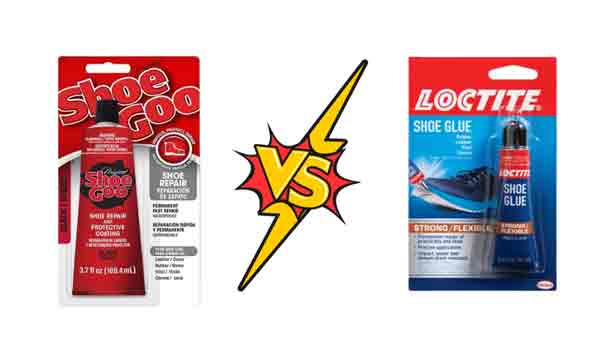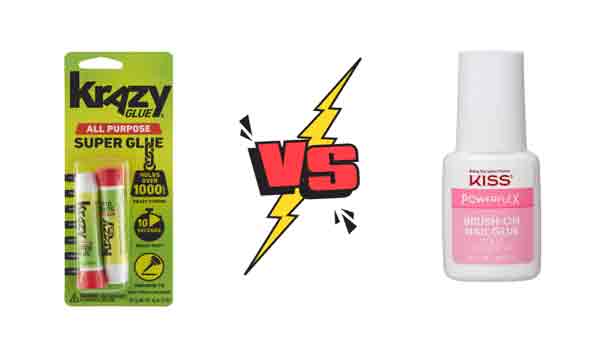Elmer’s Glue vs School Glue: Find the Ultimate Sticky Solution

Elmer’s glue and school glue are the same product, marketed under different names. They are both water-based adhesives commonly used in arts and crafts projects, and have similar formulas, ingredients, and characteristics.
Here’s a general comparison table of Elmer’s Glue vs School Glue :
| Feature | Elmer’s Glue | School Glue |
|---|---|---|
| Manufacturer | Elmer’s Products, Inc. | Various brands; may include Elmer’s or others |
| Type | Elmer’s produces various types of glue, including all-purpose, white, clear, etc. | Generic term that can refer to different brands and types of glue used in schools |
| Composition | Typically PVA (polyvinyl acetate) based | Usually PVA based, similar to Elmer’s, but can vary |
| Intended Use | Versatile; suitable for various craft and household projects | Primarily designed for school-related projects |
| Application | Used for bonding paper, cardboard, fabric, and other porous materials | Commonly used in school projects, art, and crafts |
| Color | Available in white, clear, and other variations | Typically white, but can be colored in some cases |
| Drying Time | Generally dries clear | Dries clear or translucent depending on the type |
| Washable | Many Elmer’s glues are washable | School glues are often washable for easy cleanup |
| Packaging | Available in various sizes, including small bottles and large containers | Often sold in larger quantities suitable for classrooms |
| Price Range | Can vary based on the type and size of the product | Usually budget-friendly due to bulk packaging |
| Common Varieties | Elmer’s School Glue, Elmer’s Washable School Glue | Various brands may offer their own school glue variants |
When it comes to arts and crafts projects, choosing the right glue can make all the difference. Elmer’s glue and school glue are two of the most popular adhesives on the market, and many people may wonder if there is a difference between them.
The truth is, elmer’s glue and school glue are actually the same product, just marketed under different names. Both are water-based adhesives that dry clear, are easy to clean up with water, and are non-toxic. They are commonly used in elementary school classrooms and in various arts and crafts projects.
While other types of glue may be better suited for specific tasks, elmer’s glue and school glue are versatile and reliable choices for a variety of projects.
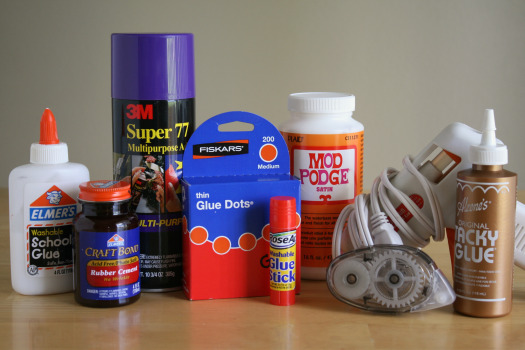
Which is the Ultimate Sticky Solution
Elmer’S Glue Overview
Elmer’s white is a type of adhesive that is widely used in schools and craft projects. It can be used for paper, wood, and other materials. This glue has been around for more than 70 years and has been a staple in classrooms all over the world.
In this section, we will go over the basics of elmer’s glue, including what it is, how it is made, different types available, and its pros and cons.
What Is Elmer’S Glue?
Elmer’s glue is a popular brand of white, non-toxic glue that is used for crafts, woodworking, and school projects. It is made from polyvinyl acetate (pva) and water. This makes it safe for children to use and easy to clean up.
It is also available in different types catering to various requirements.
How Is Elmer’S Glue Made?
The main ingredient in elmer’s glue is pva, which is a type of plastic that is derived from petroleum. The pva is dissolved in water and mixed with other additives that give the glue its texture and color. The mixture is heated, and then it is packaged into bottles for sale.
Different Types Of Elmer’S Glue
Elmer’s glue comes in a variety of types, each catering to different requirements. Here are some of the most common types:
- School glue: A white, washable glue that is perfect for craft and school projects.
- Washable glue: Similar to school glue, but it is designed to be easier to wash out of clothing and other items.
- Clear glue: A transparent glue that dries clear and is perfect for use in crafts and other projects where the adhesive should not be visible.
- Glue sticks: Solid sticks of adhesive that are perfect for paper crafts and for children to use safely.
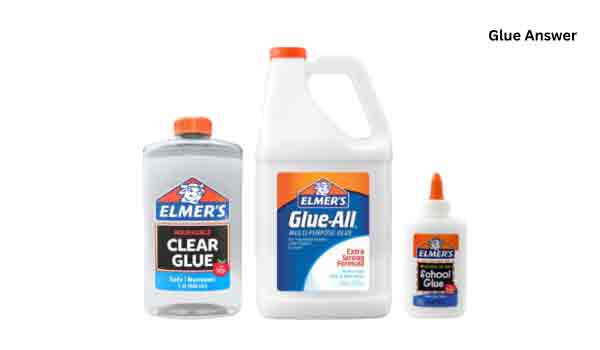
Pros And Cons Of Elmer’S Glue
Like any product, elmer’s glue has its pros and cons. Let’s take a look at some of them:
Pros:
- Non-toxic and safe for children to use
- Dries clear, making it suitable for use on a wide range of materials
- Easy to clean up with just soap and water
- Available in different types, including washable, clear, and glue sticks
- Strong as wood glue
Cons:
- Not suitable for outdoor use as it is not weather-resistant
- May require several coats to create a strong bond
- Can sometimes cause warping in thin paper or cardboard
Elmer’s glue is a versatile adhesive that has been a staple in classrooms and craft rooms for decades. It is easy to use, safe for children, and available in different types to suit different needs. Whether you are working on a school project or a craft, elmer’s glue is an excellent choice for a reliable adhesive that will get the job done.
School Glue Overview
Elmer’S Glue Vs School Glue: School Glue Overview
When it comes to choosing the right type of glue, school glue is a popular option. But what is school glue? How is it made? What are the different types of school glue, and what are the pros and cons of using it?
In this section of the blog post, we will answer all of these questions and provide you with more information about school glue.

What Is School Glue?
School glue, also known as white glue or pva glue, is a type of adhesive that is commonly used in schools and homes for various craft and diy projects. It is a water-based glue that is easy to clean up and dries clear.
School glue is non-toxic, making it safe for children to use.
How Is School Glue Made?
School glue is made by combining polyvinyl acetate (pva) with water and other additives. Pva is a synthetic polymer that is derived from vinyl acetate monomer. The pva and other ingredients are mixed together in a reactor vessel under controlled conditions to produce a homogeneous adhesive solution.
The solution is then filtered, packaged and made ready for use.
Read More About Battle of the Glues: Elmer’s vs Tacky Glue
Different Types Of School Glue
There are different types of school glue available on the market, each with its own unique properties. Here are some common types of school glue that you may encounter:
- Regular – this type of school glue dries clear and is great for most craft and diy projects.
- Washable – washable school glue is perfect for projects that may involve spills or messes. It is easy to clean up with water.
- No-run – no-run school glue is thicker and is less likely to drip or run, making it ideal for vertical surfaces or when working with heavy materials.
- Gel – gel school glue is thicker than regular school glue, making it perfect for working with porous materials or for creating a 3d effect.

Pros And Cons Of School Glue
Like all adhesives, school glue has its pros and cons. Here are some of the advantages and disadvantages of using school glue:
Pros:
- Easy to clean up with water
- Non-toxic and safe for children to use
- Dries clear
- Can be used on a variety of surfaces
Cons:
- May not be as strong as other types of adhesives, such as superglue or epoxy
- Can take longer to dry than other adhesives
- May not be suitable for use on certain materials, such as metal or glass
School glue is a versatile adhesive that is perfect for most craft and diy projects. Whether you are a student, a parent, or a diy enthusiast, school glue is an excellent choice for all your adhesive needs.
Comparison Between Elmer’S Glue All And School Glue
Similar Chemical Composition
Elmer’s glue and school glue share similar chemical compositions. Both types of glue are polyvinyl acetate or pva-based, which means that they are made from the same type of synthetic polymer. Both types of glue contain water, which is the main solvent used to dissolve the pva polymer.
The glue also has additives that help in enhancing the functional properties of the adhesive.
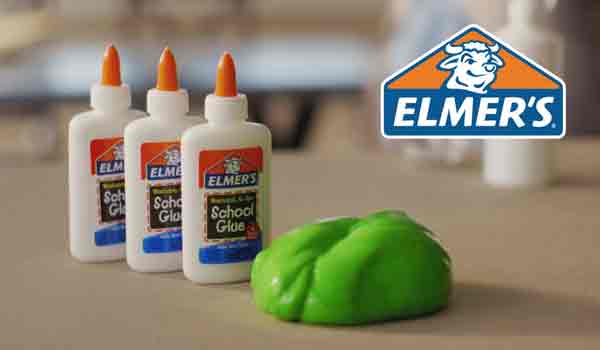
Differences In Viscosity And Drying Time
The main difference between elmer’s glue and school glue is their viscosity and drying time. Elmer’s glue is generally thicker and stickier than school glue, making it more suitable for thicker materials. The thicker viscosity is the result of the addition of ingredients like gums and resins that help make the glue stronger and more durable.
Additionally, elmer’s glue takes more time to dry completely compared to school glue. In contrast, school glue has a more runny consistency and dries much faster.
Bonding Strength And Adhesion
Elmer’s glue and school glue have different bonding strengths and adhesion properties. Elmer’s glue is an all-purpose adhesive, which means it can bond with a wide range of materials like paper, wood, and fabric. It has a strong bonding strength, making it an ideal choice for heavy-duty projects.
On the other hand, school glue has a weaker bonding strength than elmer’s glue, which means it is suitable for lighter materials like paper and foam board. However, it is still a widely used adhesive in classrooms.
Ease Of Use And Accessibility
Both elmer’s glue and school glue are easy to use and are readily accessible. They come in various sizes, and the bottles are designed to make the application process comfortable and mess-free. Elmer’s glue is more widely available than school glue and is commonly found in most craft stores, hardware stores, and even supermarkets.
In comparison, school glue is more commonly found in educational supply stores and is readily available to teachers and students.
Read Also Battle of the Craft Glues: Elmer’s Glue vs. Mod Podge
Environmental Impact
Elmer’s glue and school glue have a minimal environmental impact as they are typically made out of non-toxic ingredients. They are safe for children to use and dispose of after use. However, it is worth noting that elmer’s glue has made some strides in reducing its environmental impact by introducing eco-friendly versions of their glue that contain natural ingredients.
These eco-friendly alternatives are safe for the environment and are still effective as the original formulations.
Glue All And School Glue: Cost
Glue sticks are generally more expensive per ounce compared to liquid school glue. Liquid school glue is often cheaper per ounce than glue sticks.
Practical Uses Of Elmer’S Glue And School Glue
Elmer’s glue and school glue are two very popular types of glue for art and craft projects, diy home repair, and educational purposes. While they have many common uses, they also have their own unique applications.
Art And Craft Projects
Art and craft projects are where both elmer’s glue and school glue are commonly used. Here are some practical uses for each:
- Elmer’s glue is ideal for projects that require a strong hold. It dries clear and can be sanded and painted over, making it perfect for creating 3d projects or assembling papercraft sculptures. It is also perfect for creating slime, as it can be easily mixed with other ingredients.
- School glue is great for projects that require a temporary hold. It dries slowly, which allows time for adjustment and repositioning, making it perfect for children’s art and craft projects. It is also non-toxic and washable, which is perfect for using with kids.
Diy Home Repair And Maintenance
Both elmer’s glue and school glue can be used for diy home repair and maintenance. Here are some practical uses for each:
- Elmer’s glue is perfect for fixing broken ceramics or pottery. It can also be used to hold wood joints together before applying screws or nails. Additionally, it can be used to patch up small holes or gaps in drywall.
- School glue can be used to fix small tears in paper or cardboard. It can also be used to reattach loose wallpaper or to hold lightweight items in place before permanently affixing with stronger adhesives.
Educational Purposes
Elmer’s glue and school glue are also commonly used for educational purposes. Here are some practical uses for each:
- Elmer’s glue is perfect for creating science projects, such as creating a model of the solar system. It can also be used for school poster projects or to create 3d art projects.
- School glue is ideal for younger children’s art projects, such as making paper mache masks or creating pictures and designs with glitter and sequins. It is also perfect for creating reusable teaching resources, such as flashcards or visual aids.
Elmer’s glue and school glue have their own unique practical uses in art and craft projects, diy home repair and maintenance, and educational purposes. By considering their individual characteristics and properties, you can choose the right glue for your specific projects.
Frequently Asked Questions On Elmer’S Glue Vs School Glue
What Is The Difference Between Elmer’S Glue And School Glue?
Elmer’s glue is a brand of white pva glue while school glue is a generic term for different kinds of adhesive used in classrooms.
Can Elmer’S Glue And School Glue Be Used Interchangeably?
Yes, both elmer’s glue and school glue can be used interchangeably in most cases, especially for school projects and arts and crafts.
Which One Is Stronger, Elmer’S Glue Or School Glue?
Elmer’s glue is commonly perceived as stronger because it is thicker and adheres better to surfaces. However, different types of school glue may also have strong bonding properties.
Are There Any Safety Concerns When Using Elmer’S Or School Glue?
Both types of glue are non-toxic and safe for children to use. However, it is still recommended to keep the glue away from the eyes and mouth and supervise young children during craft activities.
Can Elmer’S Glue And School Glue Be Used On Different Materials?
Both elmer’s glue and school glue are suitable for use on paper, cardboard, and other porous materials. However, certain types of school glue may be suitable for use on non-porous materials like plastic and metal.
Conclusion
Both elmer’s glue and school glue serve their purposes for different applications. Elmer’s glue is an excellent option for simple diy projects and craft work that require fast-drying properties. On the other hand, school glue seems to be a better choice for school projects that involve paper and cardboard.
It is water-soluble and dries quicker than elmer’s glue. Ultimately, the choice between the two depends on what you’re using them for. One thing is sure; they both deliver quality results when used correctly.
I hope this article has been helpful and informative, and you now have a better understanding of elmer’s glue vs school glue. Remember, whether you choose elmer’s glue or school glue, both are great options for your craft or school project. Let us know your opinion on Elmers School glue and school glue in the comment section.
How do you remove Elmer’s glue from skin?
To effectively remove Elmer’s glue from your skin, you can follow these simple steps. First, wait for the glue to dry completely, as attempting to remove it when wet can spread it further.
Then, gently peel off as much as you can with your fingers or a soft cloth. For any remaining residue, apply a generous amount of warm, soapy water and let it soak for a few minutes.
Afterward, gently rub the area with a cloth or your fingers, using circular motions to loosen the glue.
Finally, rinse the skin thoroughly with water and pat it dry. If necessary, repeat the process until the glue is entirely gone, but avoid using harsh chemicals or excessive force to prevent skin irritation.
Is Elmer’s school glue the same as glue-all?
Elmer’s School Glue and Glue-All are similar, but Glue-All is a stronger adhesive suitable for various materials, while School Glue is primarily designed for paper and light craft projects.
What glue is similar to Elmer’s glue?
Similar glues include white PVA glue, craft glue, and clear school glue, which work well for various arts and crafts projects like paper, fabric, and lightweight materials.
Why is Elmers glue so strong?
Elmer’s glue is strong due to its PVA (polyvinyl acetate) base, forming a durable bond when it dries. It’s reliable for paper-based projects but may not be as strong as other adhesives for certain materials.
Is Elmer glue the same as PVA glue?
Elmer’s Glue is a type of PVA glue, but not all PVA glues are Elmer’s. Elmer’s products known for its PVA-based adhesive products, which include School Glue.
Is Elmer’s glue and fevicol same?
Elmer’s glue and Fevicol are different brands with similar purposes. Both are PVA-based adhesives used for various craft and DIY projects.
Does school glue make slime?
Yes, school glue is commonly used to make slime. When mixed with other ingredients like borax or saline solution, it creates a fun and stretchy slime texture.
Is school glue safe for skin?
School glue is generally safe for skin contact but should not be applied directly to large areas of skin. If skin irritation occurs, wash with water and seek medical advice if necessary.
Does school glue freeze?
School glue can freeze, and freezing might alter its consistency. To restore it, let it thaw at room temperature and shake or stir it to remix any separated components.




